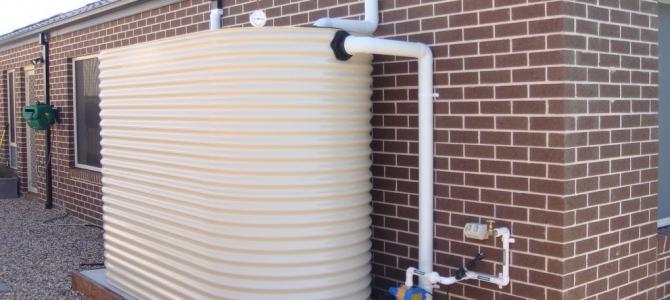 Shopping Cart
Shopping Cart
22 May 2025
Is it worth getting a water tank?

As water scarcity becomes an ever more pressing concern in the face of climate change, the question of whether to install a water tank at home is more relevant than ever.
In 2025, regions across New Zealand, Australia, and the United States are experiencing some of the most challenging drought conditions on record. Water tanks, once considered a rural necessity, are now a smart investment for urban and suburban households alike.
This updated guide explores the latest trends, benefits, and practicalities of installing a water tank, tailored to the realities of each country.
2025 Climate Context: Why Water Tanks Matter More Than Ever
The past year has underscored the vulnerability of our water supplies. In New Zealand, the summer of 2025 brought prolonged dry spells, with official drought declarations in regions like Marlborough-Tasman and Auckland facing recurring water restrictions. Across Australia, southern states are grappling with some of the lowest rainfall totals ever recorded. Towns in South Australia and Victoria have had to truck in water, and even major cities are facing tighter restrictions. Meanwhile, in the United States, the National Weather Service has forecasted another scorching summer, particularly in the western states, with drought conditions expected to intensify.
Why does this matter for homeowners?
With municipal water supplies under strain and the cost of water rising, having your own storage tank is no longer just a “nice-to-have”—it’s a practical step towards resilience and self-sufficiency.
The Benefits of Installing a Water Tank
Water tanks provide a range of benefits that make them a worthwhile investment, especially in regions prone to drought or water restrictions.
Key advantages include:
- Cost Savings: Reduce your reliance on mains water and lower your monthly bills.
- Water Security: Maintain a supply for essential uses during restrictions or outages.
- Environmental Impact: Reduce stormwater runoff and your overall water footprint.
- Drought Resilience: Ensure access to water for gardens, livestock, or even household use when supplies are tight.
For many households, these benefits are not just theoretical. In places like Auckland, Melbourne, and Los Angeles, water tanks have become a frontline defence against unpredictable supply and rising costs.
Regional Considerations: NZ, Australia, and the USA
While the core benefits of water tanks are universal, local conditions and regulations can affect both the feasibility and value of installation.
New Zealand
New Zealanders are increasingly familiar with the realities of drought. Many councils, including Auckland, have streamlined rules to make installing rainwater tanks easier—some tanks now require no building consent if they meet certain criteria. Rebates and incentives are available in some regions, particularly for tanks connected to non-potable uses like garden irrigation or toilet flushing.
Australia
Australia’s long history of drought has made water tanks a common sight, especially in rural areas. State and local governments often offer rebates, and in some regions, new homes must include rainwater tanks as part of building codes. Tanks are also vital for firefighting in bushfire-prone areas.
United States
In the US, the push for water tanks is strongest in western states like California, Arizona, and Nevada, where drought and water restrictions are a perennial issue. While regulations vary, many cities now offer incentives for rainwater harvesting, and tanks are increasingly being integrated into both residential and commercial developments.
Regional Comparison Table
| Feature/Region | New Zealand (NZ) | Australia (AU) | United States (US) |
| Climate Trends | Recurring summer droughts | Severe drought in south & west | Hot, dry summers, western drought |
| Water Restrictions | Common in cities, rural areas | Widespread, especially rural | Varies, common in West/Southwest |
| Government Support | Council incentives, some rules | Rebates, building code support | Infrastructure upgrades, local incentives |
| Tank Types | Slimline, underground, rural | Above/underground, firefighting | Ground storage, potable/non-potable |
| Installation Rules | Some tanks exempt from consent | Varies by state, often encouraged | Local permits, safety standards |
Understanding Water Tank Technology in 2025
The technology behind water tanks has advanced rapidly in recent years. Homeowners now have access to a wider range of options than ever before:
- Slimline and Modular Tanks: Designed for urban spaces, these tanks can fit along fences or under decks.
- Smart Monitoring: Sensors provide real-time data on water levels and consumption, helping you maximise efficiency. See more below.
- Advanced Filtration: Improved systems make it easier to use rainwater for potable purposes, with higher safety standards.
These innovations make water tanks more accessible and practical for city dwellers, not just rural properties.
The Smart Water Tank Level Indicator: Revolutionising Water Management
Traditional methods of checking water tank levels—like manual inspection or basic float indicators—are no longer sufficient for today’s demands. Smart Water’s Tank Level Indicator leverages advanced sensor technology and cloud connectivity to provide real-time, accurate, and actionable insights into your water storage, making it an essential upgrade for homes, businesses, and farms.
How It Works
The Smart Water Tank Level Indicator uses either ultrasonic or pressure-based sensors to measure water levels with high precision. These readings are wirelessly transmitted to a central hub or directly to your smartphone via a dedicated mobile app, giving you instant access to your tank’s status—no matter where you are.
Key Features of the Smart Water Tank Level Indicator
Smart Water’s system is designed to be user-friendly, highly accurate, and adaptable to a wide range of needs. Here’s what sets it apart:
Real-Time Monitoring
- Instantly see your water tank’s level at any time, from anywhere.
- No need for physical checks—monitor levels remotely via the Smart Water app.
Mobile App Integration
- Access data and control settings through an intuitive mobile app.
- View current levels, historical trends, and receive alerts directly on your phone or tablet.
Custom Alerts and Notifications
- Set up alerts for low water levels, abnormal usage, or potential leaks.
- Receive push notifications or emails so you can act quickly to avoid shortages or water loss.
Historical Data Analysis
- Track your water usage over days, weeks, or months.
- Identify usage patterns and optimise water consumption, especially useful during droughts or high-demand seasons.
Easy Installation and Minimal Maintenance
- Designed for straightforward DIY installation, with clear instructions and minimal technical requirements.
- Maintenance is limited to periodic sensor cleaning and power source checks.
Year-Round Adaptability
- Features tailored for all seasons: freeze warnings in winter, irrigation integration in summer, and rainfall adjustment in autumn.
- System health checks and trend analysis help you prepare for seasonal changes.
IoT and Automation Integration
- Seamlessly connects with broader smart home or farm IoT systems.
- Enables automated controls, such as starting pumps or irrigation based on tank levels.
Real-World Applications Across NZ, Australia, and the USA
The Smart Water Tank Level Indicator is especially valuable in regions facing water restrictions or drought:
- In New Zealand and Australia: Drought conditions in 2025 have made water conservation critical. The indicator helps manage limited supplies, supports compliance with restrictions, and integrates with irrigation systems for efficient garden or farm management.
- In the USA: As the western states brace for another hot, dry summer, Smart Water’s system empowers users to track every drop, optimise usage, and avoid costly shortages or overflows.
How Much Water Can You Collect?
The potential water you can harvest depends on your local rainfall and roof size. Here’s a quick reference:
| Location | Average Annual Rainfall (mm) | Roof Area (m²) | Potential Collection (Litres/year) |
| Auckland, NZ | 1,200 | 100 | 120,000 |
| Melbourne, AU | 650 | 100 | 65,000 |
| Los Angeles, US | 380 | 100 | 38,000 |
Note: Actual collection will be lower due to losses from first flush, evaporation, and overflow.
Practical Uses for Water Tanks
A water tank’s value depends on how you use it. For many households, the greatest benefits come from integrating tank water into both outdoor and indoor systems.
Common uses include:
- Outdoor: Garden irrigation, car washing, topping up pools, and firefighting (especially in Australia).
- Indoor: Toilet flushing, laundry, and with proper filtration, even for drinking and cooking.
- Rural/Off-Grid: Essential for properties not connected to mains supply, and reduces reliance on costly water deliveries.
Challenges and Considerations
While the benefits are compelling, it’s important to consider the challenges:
- Upfront Cost: Tanks, pumps, and installation can be a significant investment, though rebates may offset some of the cost.
- Maintenance: Regular cleaning and filter replacement are necessary, especially for potable use.
- Space: Urban properties may need creative solutions like slimline or underground tanks.
- Regulatory Compliance: Always check local rules regarding placement, overflow management, and potable use.
Quick Tips:
- Use tank water regularly to keep it fresh and maximise rain capture.
- Maintain filters and screens to ensure water quality.
- Consider smart monitoring for leak detection and efficient usage.
Should You Get a Water Tank in 2025?
Given the current climate trends and the increasing strain on public water supplies, installing a water tank is a forward-thinking investment for most households in New Zealand, Australia, and the USA. The benefits—financial savings, water security, and environmental sustainability—are more relevant than ever.
You should seriously consider a water tank if you:
- Live in a drought-prone area or face frequent water restrictions.
- Want to reduce your environmental impact and utility bills.
- Value having a backup water supply for emergencies or gardening.
Conclusion
The realities of 2025 make the case for water tanks stronger than ever. Whether you’re in Auckland, Adelaide, or Los Angeles, a water tank can help you weather droughts, save money, and contribute to a more sustainable future. With advances in technology, government incentives, and growing public awareness, there’s never been a better time to invest in your own water security.
Ready to take the next step? Contact Smart Water for expert advice on choosing the right tank for your home, and start making every drop count.
Post first publish 22 August 2022 and update 22 May 2025
